Assamese traditional attire is a true reflection of the state’s culture, heritage, and artistic craftsmanship. It represents the history of the people, their values, and their respect for nature. From the intricate weaving techniques used to create traditional Assamese garments to the symbolism embedded in the colors and patterns, every piece of clothing has a story to tell.
Historical Roots of Assamese Clothing
The origins of Assamese traditional attire can be traced back to the ancient times of the region’s rulers and kingdoms. It is believed that the attire worn in Assam has evolved over centuries, influenced by a variety of cultures and rulers. Assam’s traditional dresses have been influenced by the indigenous tribes, Hinduism, Buddhism, and even colonial India, blending together to form a unique sartorial identity.
The traditional dress of Assam is designed to suit its climate—humid and tropical. As a result, the clothing is lightweight and breathable, crafted from cotton, silk, and other locally sourced materials. Silk, particularly Muga silk, is considered a symbol of Assamese heritage, and the intricate weaving of silk fabric plays an important role in the creation of Assamese attire.
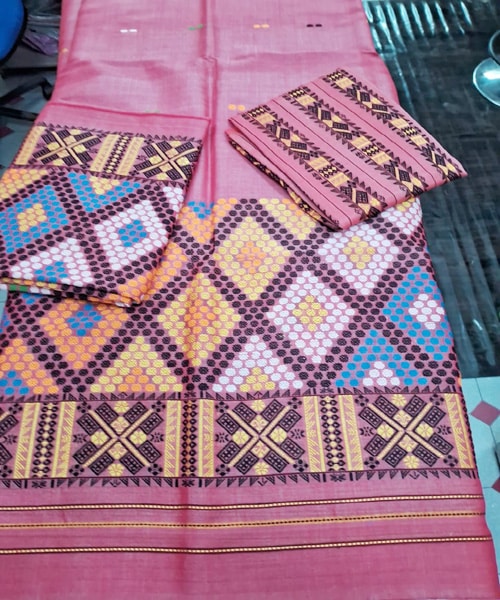
Symbolism and Cultural Significance
Each piece of Assamese attire carries a deep sense of symbolism. The Mekhela Chador, the traditional dress worn by Assamese women, is rich in cultural meaning. The colors and patterns often represent the life of the wearer, the agricultural cycles, and spiritual beliefs. The Assamese Gamosa, worn by men, carries great cultural significance. It is used in a variety of ceremonies and has become a symbol of respect and hospitality.
- The Mekhela Chador: The Essence of Assamese Elegance
The Mekhela Chador is the traditional dress of Assamese women, often regarded as one of the most elegant and sophisticated outfits in India. It consists of two pieces of cloth— the ‘Mekhela,’ which is a skirt-like garment that covers the lower part of the body, and the ‘Chador,’ a long piece of cloth that drapes over the upper body like a shawl or sari.
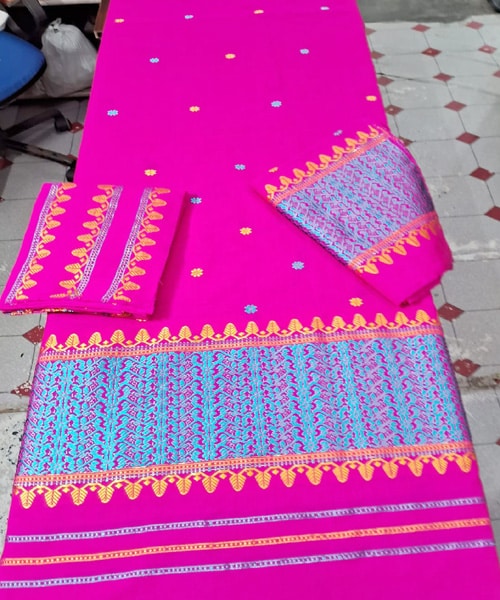
Description of Mekhela Chador
The Mekhela Chador is known for its graceful draping style, where the Chador is elegantly wrapped over the body, allowing the fabric to flow and shimmer in a beautiful, mesmerizing manner. The Mekhela Chador is typically made from silk, cotton, or a combination of both, with the Muga silk being a particularly prized fabric due to its luxurious texture and golden hue. The fabric’s weave is intricately designed, with motifs ranging from floral patterns to geometric shapes.
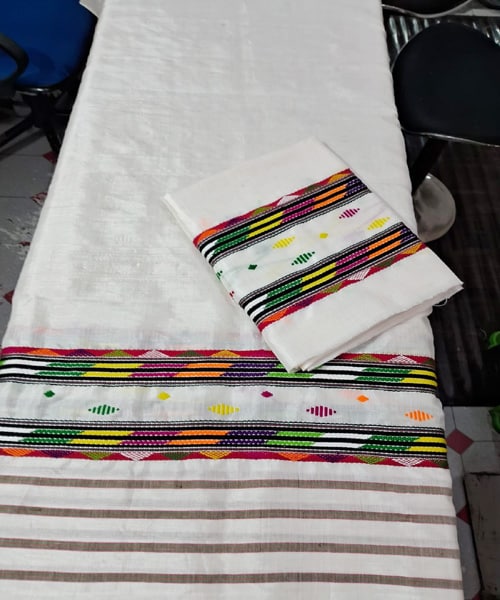
Different Types of Mekhela Chador
While the Mekhela Chador remains a timeless classic, several variations of it exist today. Some of the most popular types include:
- Bihu Mekhela Chador: Worn during the Bihu festival, this style is characterized by bright colors, traditional motifs, and ornate patterns. It is often worn with a beautifully decorated blouse and can be made from Muga or Eri silk.
- Wedding Mekhela Chador: This style is generally made from premium silk and features heavier work, intricate borders, and elegant embroidery. Wedding Mekhela Chadors are usually adorned with rich gold or silver threadwork.
- Casual Mekhela Chador: For daily wear, Assamese women prefer simpler, more practical versions of the Mekhela Chador, often in cotton or silk blends, suitable for comfort and ease of movement.
- Craftsmanship Behind Mekhela Chador
- The making of the Mekhela Chador is a highly skilled craft. The fabric is handwoven, often by artisans who use traditional looms. Muga silk, a unique variety of silk found only in Assam, is a prized material used in these garments. The weaving process involves intricate patterns and designs that are passed down through generations. This art form, known as Assamese weaving, is an integral part of the state’s heritage and is now recognized worldwide.
Occasions for Wearing Mekhela Chador
The Mekhela Chador is worn on various occasions, such as:
Bihu Festival: The most important cultural festival of Assam, Bihu celebrates the Assamese New Year and the arrival of spring. Women wear their finest Mekhela Chador during this time, adorned with bright colors and intricate patterns.
Weddings: The Mekhela Chador is a popular choice for brides, who wear it in vibrant shades of red, green, and gold.
Religious Ceremonies: The Mekhela Chador is also worn during religious and cultural ceremonies, where its elegant draping style adds to the spiritual significance of the event.
- The Sari: A Contemporary Touch to Assamese Fashion
While the Mekhela Chador holds a special place in Assamese tradition, the Sari, a piece of cloth draped around the body, is another popular traditional garment worn by Assamese women. The Assamese Sari, although similar in structure to other Indian sarees, has its unique characteristics, making it an essential part of Assamese fashion.
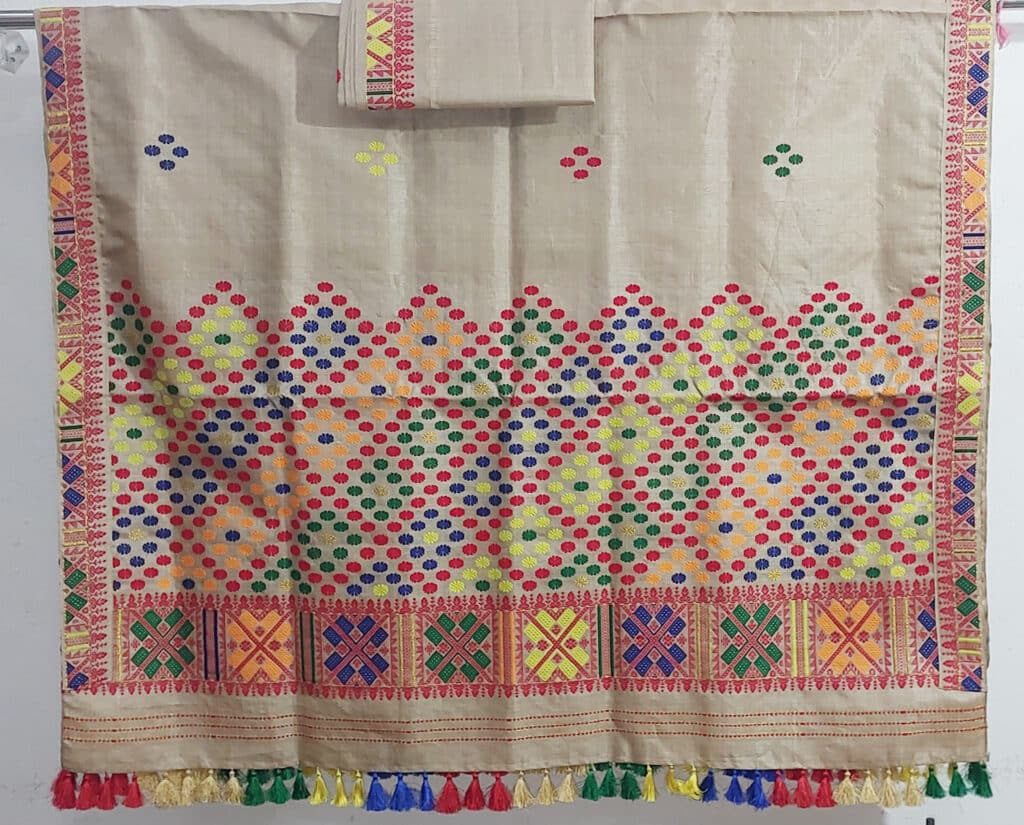
Assamese Sari vs. Traditional Indian Sari
The primary difference between an Assamese sari and other Indian sarees lies in the draping style and the fabric used. The Assamese sari is usually shorter, typically around 4.5 meters, and is draped in a manner that makes it resemble a half-sari or a draped skirt. The fabric used for Assamese sarees is mostly silk—Muga, Eri, and Pat are the most popular types—and they are woven with traditional motifs and borders.
Conclusion
Assamese traditional attire, from the elegant Mekhela Chador to the distinctively draped Assamese sari, is a testament to the rich cultural heritage of Assam. Each garment tells a story of the region’s history, craftsmanship, and symbolism. The intricate weaving techniques, combined with the use of locally sourced materials like Muga silk, make Assamese clothing unique and highly revered in the world of textiles.
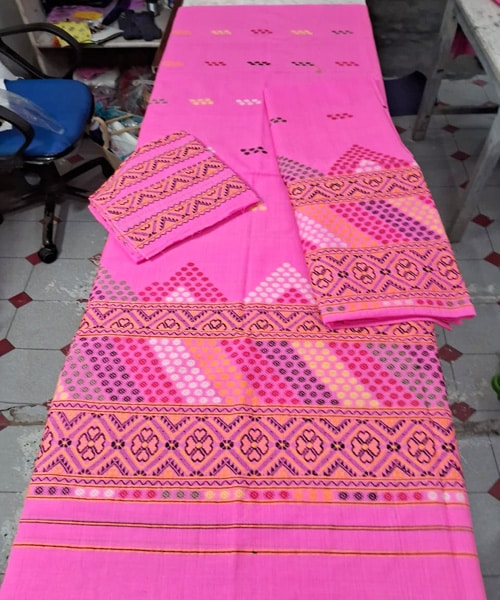
In the modern world, these traditional garments continue to hold cultural significance, both in Assam and beyond. They represent the pride of Assamese heritage and continue to inspire contemporary fashion trends. Understanding the essence of Assamese traditional dress provides insight into the culture, artistry, and values of one of India’s most vibrant regions